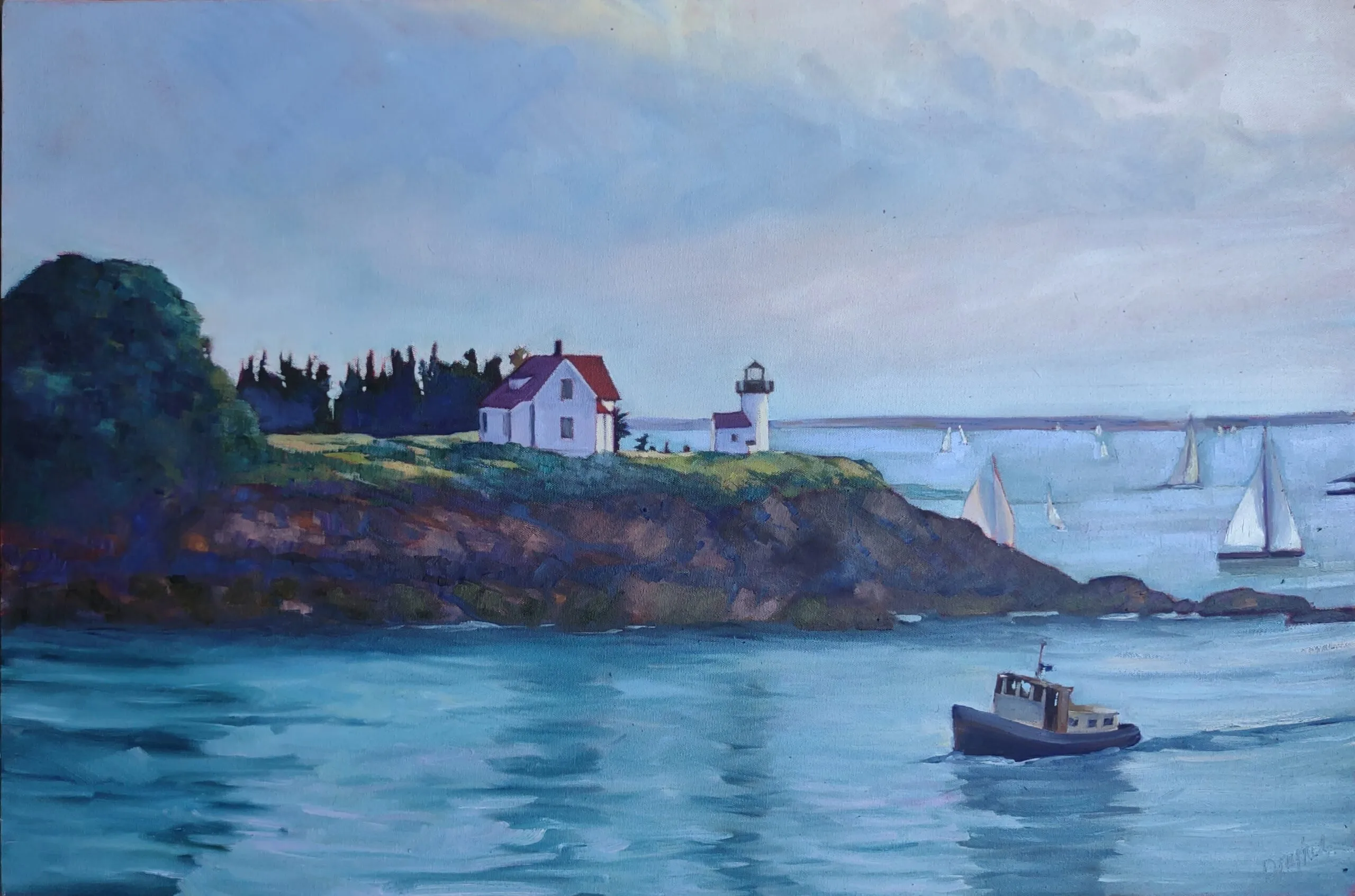
“I think when we ‘paint for ourselves,’ that’s when growth can happen. Our work just might push to a different level,” Barb Walker commented recently on Facebook.
“The whole burden of making a living selling artwork can have a devastating effect on one’s work,” Eric Jacobsen responded. “It keeps us in repetition mode and causes us to play it safe. Charlie Movalli posed a great question once. He asked, ‘Do you paint to be understood…or do you paint to understand?'”

I’ve had times where I stopped selling entirely to concentrate on improving my skills, and times when I produced very personal work that will never sell in my lifetime. But I’m more cynical than Eric and Barb. I need to eat, and I’m not much good at anything else. I either sell paintings or take a job as a greeter at Walmart.
Somehow our culture has created the myth that artists are above thinking about the business of art. “I’ve never been in it for the money,” said one friend (who nonetheless has a family to support). Nobody expects their doctors or lawyers to be motivated by altruism, and most of my painting buddies have spent at least as much time learning their craft as a professional-school graduate. (The BFA is just the beginning, friends.)
It’s counterproductive for artists to buy into this myth. If we don’t set a high value on our artwork, who will?
Above it or afraid?
Sometimes, people refuse to engage in the marketplace because they’re afraid of failure. Painting for public consumption can make us better painters, however, as we strive to connect with an audience.
It doesn’t help that there’s some stupendously awful work out there masquerading as ‘art.’
This week a reader sent me a photo of an object painted by an ‘artist’ as a fundraiser. It was incompetent by every measure of design and execution. “It seems almost like satire. It highlights the unfortunate reality that anyone can call themselves an artist, and far too many do,” my reader commented.
I spend a great deal of time teaching painters the objective criteria for critique. I wish someone would do the same for art fans. “I don’t know art but I know what I like,” is a great starting point. However, it’s not enough. If you want a painting that will continue to speak to you for years to come, it helps to understand what makes a good painting. And that’s not opinion; it rests on a thousand years of tradition and critical thinking.
As with every philosophical endeavor, understanding starts with a common language. When artists carry on about things like lost-and-found line or pictorial depth, they’re not just trying to sound smart and smarmy. These are real factors that affect the staying power of a painting. And they’re as relevant in abstraction as in figurative art.

Two events this week
Kay Sullivan, Eric Jacobsen, Jill Valliere and Jim Vandernoot will be featured at the Red Barn Gallery‘s Strictly Invitational show this evening from 5-7 PM. That’s located in the heart of scenic Port Clyde village, across the street from the General Store. They’re a powerful lineup that’s worth driving out to see.
Camden on Canvas is next weekend, July 21-23, in the equally picturesque village of Camden, ME. There are too many great artists to list them by name here, but Colin Page, in particular, deserves a shout-out. Each year, he wears two hats, as organizer and participant. He and the library staff have put together a fantastic event in just a few short years. I strongly encourage you to come out and see the art.
Reserve your spot now for a workshop in 2025:
- Advanced Plein Air Painting, Rockport, ME, July 7-11, 2025.
- Sea and Sky at Acadia National Park, August 3-8, 2025.
- Find Your Authentic Voice in Plein Air, Berkshires, MA, August 11-15, 2025.
- Immersive In-Person Fall Workshop, Rockport, ME, October 6-10, 2025.



You greeting at WalMart…hmm…better keep painting! 😆
Yeah, that doesn’t seem like my most brilliant idea ever. “Why are you wasting your money on that @#$? You know, that stuff clogs your arteries. What’s the matter with you, anyway?”
I feel that art will sell not on the quality of the art itself but on the relationship between the art and the potential purchaser. Many times it does not matter how qualified or good the work is because, in reality, the purchaser only knows what they like. In a few cases, it will sell because of the reputation of the artist, and the buyer is looking for an investment. Many times it could be because there is a connection between the customer and the seller. they like you and understand your struggles as an artist.
I know a painting buddy, who paints the most beautiful cat and dog pictures, with particularly expressive eyes. They take hours and should sell for several hundred pounds at least, yet my buddy is prepared to take a price that will cover the cost of materials.
I paint and draw lots of pictures. I put’em all out there on the socials. The good ones sell and at a reasonable price. On balance I refuse to undersell my work.
In short, I agree with you, that charging a price for your work that reflects the time and skill, you’ve spent and aquired, is the way to go.